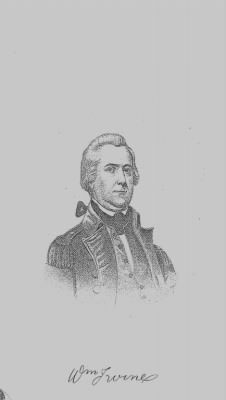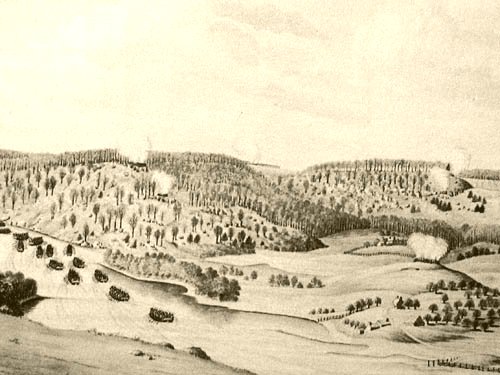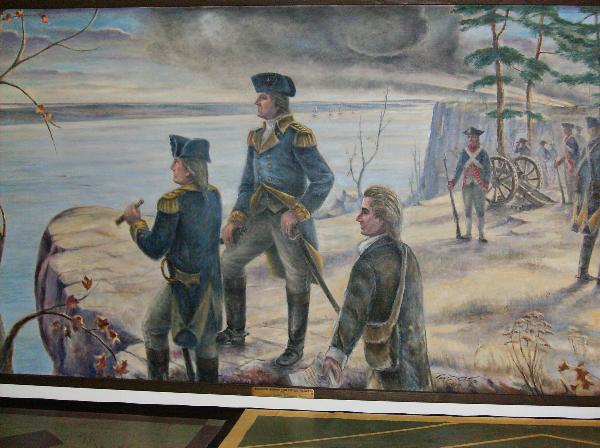The Place
The men worked hard with shovels and picks. Despite their efforts, most of these were primitive and poorly attended earthworks. But on June 20, 1776, some Pennsylvania battalions of the Continental Army began constructing a five-bastion fort at the intersection of present-day Fort Washington Avenue and 183rd Street. The quickly assembled, earthen-walled structure had no water supply and no significant barricade to repel attackers. Still, it was situated on the highest hill on Manhattan Island. This made it an ideal location for the fort, with its views overlooking the Hudson River to the east, the valley of Manhattan extending south to what is now 120th Street, and protection on the north side from high ground that commanded the Kings Bridge approach. They named it Fort Washington in honor of their commander-in-chief.
The Namesake
 |
| Colonel Robert Magaw hoped to defend the fort |
Washington correctly assessed the high ground at the north end of the island as strategically valuable. With its "sister" fort, Fort Lee (named after Washington's deputy commander, Charles Lee), Fort Washington controlled access to the Hudson Valley, the Bronx, Westchester, and the areas bordering New England. And of course, it threatened any forces occupying the central and lower parts of the Island of New York. But left unsupported and undermanned, Washington's namesake was a liability to his strategy and would doom many of his best men. After defeating the Continental Army at the Battle of White Plains, the British Army
forces under the command of Lieutenant General William Howe moved to capture Fort Washington, the last American stronghold in Manhattan. Realizing this, Washington issued a "discretionary" order to General Nathaniel Greene to abandon the fort and remove its garrison of 3,000 men to New Jersey. But the fort's commander, Pennsylvania Colonel Robert Magaw, resisted the order to abandon it. He believed it could still be defended against the British and implored Greene to let him defend the positions. Greene agreed to leave Magaw in place until he could consult with Washington and crossed the Hudson to discuss the situation. Unfortunately, the usually lethargic Howe attacked the fort before General Washington was able to completely assess the situation.
The Battle
 |
| British ships bombarding |
 |
| The 42nd landing |
Aftermath
 |
| Washington watched in frustration from Fort Lee |
From across the river, its sister Fort Lee, George Washington watched helplessly as his last hold on the strategic Island of New York evaporated. Almost 3,000 men from some of his best regiments marched off into captivity. As critical, valuable, and irreplaceable supplies and munitions, including 150 cannon, fell to the British, who occupied the fort and renamed it Fort Knyphausen, after the Hessian general instrumental in taking it. The high ground covering the northern approach to Kingsbridge was turned into a separate fort, named after New York's last Royal Governor, Tryon. A third fort was named Fort George. The fact that the British created three forts where previously one large American fort existed is significant. In Magaw's defense, he was not given enough men to properly man and defend the extensive positions. This is a common theme in defending forts (to be repeated at Ticonderoga the following year) - they could be a death trap if the garrison wasn't large enough. The British army and its sympathizers then occupied the city until the American victory in 1783. After the war, vestiges of the fort disappeared, and the surrounding area became known as Washington Heights. Granite paving outlines the former contours of Fort Washington in the southern portion of nearby Bennett Park.
Warfare is a fascinating subject. Despite the dubious morality of using violence to achieve personal or political aims. It remains that conflict has been used to do just that throughout recorded history.
ReplyDeleteYour article is very well done, a good read.